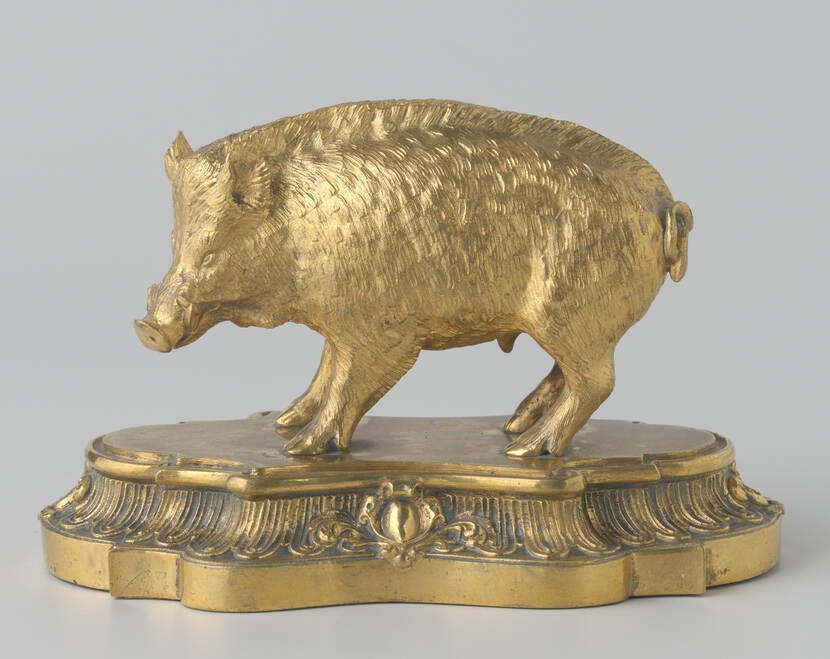A recovered table ornament
Weblog
In the past, well-to-do citizens would decorate their dining tables with sumptuous flower arrangements, fine candlesticks and costly artefacts made of precious metal and glass, such as this bronze wild boar. Extravagant table decorations allowed the hostess and host to flaunt their wealth and refined style.

The object was made using a simple process, in which wax was first injected into a rubber mould. A tube was then placed around the mould, into which plaster was poured. The wax was heated, causing it to run out of the mould, and hot bronze was poured into the empty space between mould and plaster. Once it had all cooled down, the object was finished by hand.
The wild boar ornament belonged to Jewish banker Fritz Gutmann and his wife Louise, who were forced to sell their entire art collection to the Nazis during the war. Both were murdered by the Nazis in 1944, and the collection came into the hands of the Dutch state after the war. The wild boar became part of the national art collection (aka 'NK collection') in 1949 and was loaned to the Dutch embassy in Buenos Aires in 1982.
Following a request for restitution submitted by Gutmann's heirs in 2002, the State Secretary for Education, Culture and Science decided to return the ornament. However, the bronze wild boar turned out to be 'administratively missing', and so could not be returned at that time. Both parties agreed that if the ornament were to be recovered, it would remain in the national art collection. It turned up again in 2004 and, as was agreed, has been held by the State ever since.